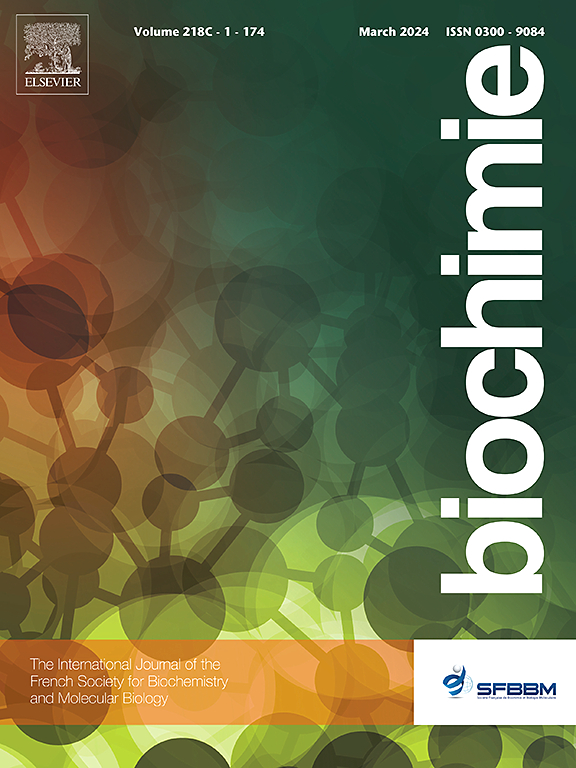寨卡病毒感染小鼠脑内血管紧张素 I 转换酶活性增加:对治疗的影响?
IF 3.3
3区 生物学
Q2 BIOCHEMISTRY & MOLECULAR BIOLOGY
引用次数: 0
摘要
自巴西突然出现与寨卡病毒(ZIKV)相关的小头畸形以来,先天性寨卡病毒综合征(CZS)已成为全世界关注的一个重要问题。寨卡病毒主要由伊蚊传播,在血清学上与登革热病毒(DENV)有相似之处,使诊断和/或临床治疗变得复杂。血管紧张素 I 转换酶(ACE)与中枢神经系统(CNS)的神经保护或抗炎特性有关。ACE在这两种黄病毒感染中可能发挥的作用在很大程度上仍未得到探讨。在这项研究中,我们评估了感染 ZIKV 或 DENV 的小鼠大脑中的 ACE 活性,两者均与 MOCK 进行了比较,结果显示只有感染 ZIKV 的小鼠的 ACE 活性增加了约 30%(p = 0.024),而感染 DENV 的动物大脑中的 ACE 活性没有变化(p = 0.888)。此外,用β干扰素(IFNβ)治疗也能使ZIKV感染动物的ACE活性恢复到接近MOCK对照组的水平。尽管ZIKV或DENV感染都会出现炎症反应,但只有ZIKV与小头症有关,而且与ACE活性增加以及IFNβ治疗后的逆转有关。此外,只有在脑室内注射(ICV)(F (2, 16) = 7.907, p = 0.004)后才观察到 ACE 活性增加,而腹膜内注射(IP)ZIKV(F (2, 26) = 1.996, p = 0.156)则没有观察到,这表明观察到的中枢 ACE 活性调节可能与大脑中存在这种特定的黄病毒有关。本文章由计算机程序翻译,如有差异,请以英文原文为准。
Infection by zika virus increase angiotensin I-converting enzyme activity in mouse brain
Congenital zika virus syndrome (CZS) has become a significant worldwide concern since the sudden rise of microcephaly related to zika virus (ZIKV) in Brazil. Primarily transmitted by Aedes mosquitoes, ZIKV shares serologic similarities with dengue virus (DENV), complicating the diagnosis and/or clinical management. The Angiotensin I-Converting Enzyme (ACE) was associated with either neuroprotective or anti-inflammatory properties in the central nervous system (CNS). The possible role(s) of ACE in these two flaviviruses infection remain largely unexplored. In this study, we evaluate ACE activity in the brain of ZIKV- or DENV-infected mice, both compared to MOCK, showing about 30 % increased ACE activity only in ZIKV-infected mice (p = 0.024), while no change was noticed in brain from DENV-infected animals (p = 0.888). In addition, the treatment with interferon beta (IFNβ), under conditions previously demonstrated to rescue the normal size of microcephalic brains determined by ZIKV infection, also restored ACE activity in ZIKV-infected animals to levels close to that of the MOCK control group. Although inflammatory responses expected for either ZIKV or DENV infections, only ZIKV was associated with microcephaly, as well as with increased ACE activity and reversion by treatment with IFNβ. Furthermore, this increase in ACE activity was observed only after intracerebroventricular (ICV) injection (F (2, 16) = 7.907, p = 0.004), but not for intraperitoneal (IP) administration of ZIKV (F (2, 26) = 1.996, p = 0.156), suggesting that the observed central ACE activity modulation may be associated with the presence of this specific flavivirus in the brain.
求助全文
通过发布文献求助,成功后即可免费获取论文全文。
去求助
来源期刊

Biochimie
生物-生化与分子生物学
CiteScore
7.20
自引率
2.60%
发文量
219
审稿时长
40 days
期刊介绍:
Biochimie publishes original research articles, short communications, review articles, graphical reviews, mini-reviews, and hypotheses in the broad areas of biology, including biochemistry, enzymology, molecular and cell biology, metabolic regulation, genetics, immunology, microbiology, structural biology, genomics, proteomics, and molecular mechanisms of disease. Biochimie publishes exclusively in English.
Articles are subject to peer review, and must satisfy the requirements of originality, high scientific integrity and general interest to a broad range of readers. Submissions that are judged to be of sound scientific and technical quality but do not fully satisfy the requirements for publication in Biochimie may benefit from a transfer service to a more suitable journal within the same subject area.
 求助内容:
求助内容: 应助结果提醒方式:
应助结果提醒方式:


